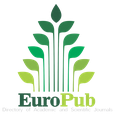Ballast water management: technology choice comparing TODIM and THOR 2
Keywords:
Maritime transportation, Water pollution, TODIM, THOR 2, Multi-Criteria Decision AnalysisAbstract
This paper approaches the problem of ballast water treatment in ships. This has been identified as one of the four greatest threats to the world’s oceans. Solutions that have been considered for solving the problem are alternative water treatment technologies. In the case study reported in this paper three major water treatment technologies have been evaluated with the help of twenty-six criteria, quantitative as well as qualitative by using two discrete multicriteria methods, TODIM and THOR 2. The THOR 2 consists of the axiomatic evolution of the THOR method and both THOR 2 and THOR are made available through the THOR Web platform. Five groups of evaluation criteria are then considered: practicality; biological effectiveness; cost/benefit ratio; time frame for the implementation of standards; and environmental impact of the process' sub-products. In this paper a case study on choosing a ballast water treatment technology is presented. Three alternative ballast water management technologies are proposed by experts in the field and are evaluated with the help of twenty-six criteria, quantitative as well as qualitative. Each ballast water management method is described by a list of twenty-six attributes or criteria. After setting the problem in a clear way and consulting different experts, the two separate applications of both TODIM and THOR 2 are performed. What is denoted as Management Method #1 is indeed chosen as the best alternative according to both methods. The conclusion is that those two methods, although conceptually and analytically quite different, lead essentially to the same main results. Two other applications of both TODIM and THOR have indeed confirmed the convergence of results in spite of the conceptual and technical differences between the two methods. This suggests that formulating a decision problem in a correct, clear-cut way can be at least as important as the technical characteristics of the method per se.
Downloads
Posted
License
Copyright (c) 2021 Carlos Francisco Simões Gomes, Luiz Flavio Autran Monteiro Gomes, Luís Alberto Duncan Rangel, Fabricio Maione Tenório, Marcos dos Santos

This work is licensed under a Creative Commons Attribution-NonCommercial-ShareAlike 4.0 International License.







